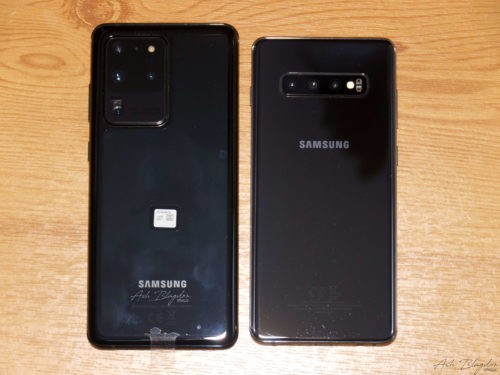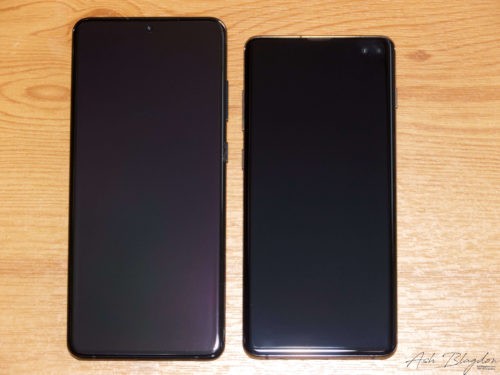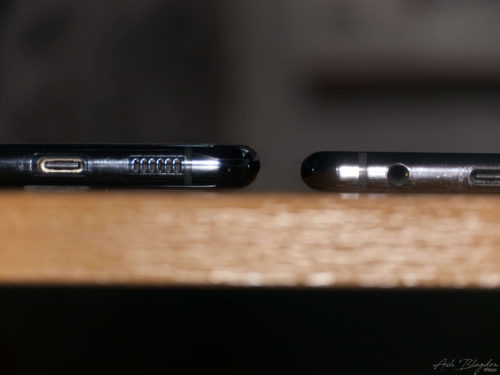
Over 30 tips & tricks for the Samsung Galaxy S20 Ultra and Hands On Review. Samsung have packed the S20 with a wealth of features, and it can be overwhelming when you take your first look in the settings menu, wondering what to alter. What’s worse is if there’s something you want to change, but you aren’t sure how to do it. Here are a few tips that I think will be useful and of course I’ll keep adding and updating the page as I found out more over time.

The first thing you want to do before using your new phone is to back up your Samsung account and Whatsapp chat on your old phone, so you don’t lose any recent messages, added contacts or setting changes. I know a few people that forget to do this almost every time. Once you’ve done that it’s easy to use smart switch to transfer all your data wirelessly or by cable. I use cable as it’s so much faster and reliable for this. Now it’s time to set up and play with your shiny new phone.
- Activate dark mode
Who doesn’t want dark mode? It’s good for your eyes, better for the battery, and cool too. To switch to dark mode go to Settings > Display, and at the top of the screen tap the Dark option, and watch the lights go out. Under this, tap Dark Mode Settings to either schedule a switch to dark mode, or to set up to activate automatically on sunset to sunrise.

Dark Mode
- Switch to 120Hz refresh rate
Your Galaxy S20 Ultra’s screen refresh rate will come out of the box set to 60Hz, which is great for battery life, but doesn’t stretch the stunning AMOLED screen ability. It can run at 120Hz, resulting in buttery smooth scrolling on the web, in apps, and in certain games too. However, it will drain the battery faster so use it wisely. Switch by going to Settings > Display > Motion Smoothness. Tap this and select High Refresh Rate, then press Apply.
- Turn on Blue light filter
Great for when your in bed or just chilling on the sofa. I choose to have this automatically come on and off with the sunset to sunrise, you can custom schedule it if you like to. Do so by going to Settings > Display > Blue light filter
- Go to the Home screen without swiping after using Face Unlock
Samsung has opted to make you swipe the screen after unlocking it with Face Unlock, which I find annoying. You can save time by avoiding this making it easier to use the phone with one hand too. Face unlock is set up during the initial setup time, but if you skipped that step, go to Settings > Biometrics and Security > Face Recognition > Stay on lock screen Turning the toggle off.
- Turn off your phone using the power button
This may sound strange, but when you long-press the power button on the Galaxy S20, instead of showing the power menu, it wakes up Bixby, Samsung’s virtual assistant. There are now three ways to turn the phone off. It’s recommended you use the power menu in the notification panel, but many people will just want to press the button like most other phones. To switch from Bixby to the power menu, go to Settings > Advanced Features, and then Side Key. In this menu select the Power Off Menu under actions for the Press and Hold option.
- Use gesture controls
When you start using the Galaxy S20 it will be with the standard back, home, and menu Android buttons at the bottom of the screen, but you can switch to an alternative gesture-based control system if you prefer. Go to Settings > Display, and then look for Navigation Bar. Here, select the option named Full Screen Gestures. This removes the Android buttons and increases screen visibility. I tried the swipe from sides and bottom, but wasn’t keen. I’m too used to the swipe from bottom so I stuck with that.
- Turn on Find my mobile
You’ll want to enable find my mobile as if you ever lose your phone you can simply log in on any other device to see where its located at findmymobile.samsung.com. Also it’s a good idea to turn on send last location when the battery drops to a certain level. Find it here Settings > Biometrics and security > Find my mobile

Samsung Find my Mobile
- Turn on one handed mode
With devices getting bigger this is becoming an increasingly handy feature. Out of the box it’s disabled, go to settings > advanced features > One-handed mode. I use gestures so with a simple swipe down over the middle bottom of the screen your into one handed mode and easily have access to everything you need with one hand and you can select to change sides for left or right handed people. When your done just tap on the blank part of the display to return to full screen mode.
- Change the screen resolution
Like the screen refresh rate, the Galaxy S20 Ultra’s out-of-the-box screen resolution by default is 2400 x 1080 pixels, but it can run at 3200 x 1400 pixels. To see this, go to Settings > Display > Screen Resolution. There are three options here, and you want to select the WQHD+ option. Again, use this option sparingly because it will add further strain on the battery life, and bear in mind it cannot be used in conjunction with the 120Hz refresh rate. Because of this I have opted for the smoother 120Hz refresh rate over the higher resolution.
- Turn on Edge Lighting
This is cool, you can fully customize the light styles and colours that appear around the device as you receive a notification. Each app can have its own colour usually taken from the colour of the apps icon itself. In the advanced option you can change the width, speed and time the lights appear, swipe left to reveal more. Settings > Display > Edge screen > Edge lighting
- Turn on smart pop up view
This is really handy. Remember Facebook Chat Heads? Samsung can do that with messaging services across the Galaxy S20 Ultra, popping out the conversation into a floating button so you can respond without switching apps – as long as the app supports multi window use, like Whatsapp. It’s called “smart pop-up view” and you can find it in settings > advanced features > smart pop-up view. You can toggle the apps you want to pop-up and then you can reply to them in a separate window.
- Turn on live caption
Live caption is a system-wide offering that will give you captions for any video playing on screen. It’s hiding in the volume controls. Just tap the volume up or down and when the slider appears, tap the drop down arrow. This will show all your volume controls, but at the bottom of the list you’ll see the option to turn on live caption. You can also find it in the pull down quick panel. Now you’ll have a pop up with subtitles you can move around anywhere on screen. Great for when you don’t have headphones but in a public place and you don’t want sound.
- Turn on the video enhancer
There’s a video enhancer hiding on the Galaxy S20 Ultra that aims to boost videos. It works with a range of apps, including Netflix, Play Movies, Prime Video and YouTube. Head into settings > advanced features > video enhancer to toggle it on or off depending on your preferences.
- Turn on “Ok Google”
The hotword to get Google to respond with just your voice is part of the Google app, but you’ll have to turn it on to get it to respond. Head into the Google app, tap “more” in the bottom right-hand corner, settings > voice > voice match > hey Google. Toggle on the option and as long as there’s a voice match linked to your account, it will recognise you speaking and give you voice control of your phone.
- Use do not disturb allowing alarms and exceptions
If you want silence then do not disturb is great. But if you want some notifications, then you have to designate the exceptions that are allowed. Head into settings > sound and vibration > do not disturb > allow exceptions. Here you can allow alarms (essential if you want to wake up in the morning), but also allow repeat callers or nominated contacts – such as favourites for messages and calls – as well as reminders. It’s worth checking what can get through and what can’t. I schedule this turn automatically come on and off everyday after set times.
- Turn your phone into a music streaming hub
With Music Share, your friends can find your S20 on their own phone and use it as a hub to play their music through your speaker. To turn it on go to Settings > Bluetooth > Advanced > Music Share.
- Launch your apps insanely quickly
Samsung lets you lock up to three apps to the RAM so they’ll instantly launch whenever you call on them. You can find the setting on the Recents screen (where you find all of your open apps). Just tap on the app icon and select Keep open for quick launching. You might see a slight hit on battery life, but for apps and games with lengthy load times, it’ll be worth it.
- Stop accidentally triggering Samsung Pay
Samsung Pay shortcut at the bottom of the screen is more of a nuisance on the S20 than ever before. I’ve lost count of how many times I accidentally launched it while trying to bring up the Recents screen or go backwards. It actually took me a while to figure out how to disable it. You’ll need to go to the Samsung Pay app, in the sidebar select the hamburger setting > settings cog > Quick access, then toggle off the Home screen option. You can still swipe up on the lock screen to open Samsung Pay. Here are a few tips and tricks I’ve picked up after a few days use of the Samsung Galaxy S20 Ultra:
- Automatically unmute your phone
This is a problem I didn’t even realize I had, but we all do it. Put our phone on silent at a movie or meeting and forget to turn the sound back on when it’s over. With One UI 2 on the Galaxy S20 Ultra, you can set your phone’s sound to turn on automatically after a set period of silence. To find it, swipe down the quick notification panel > press and hold the sound > select mute > the Temporary mute toggle will appear, letting you choose the duration of your muting.
- Quickly find wifi or bluetooth
This isn’t new, but I still have discussions with people that don’t know you can do this. Simply pull down the quick panel and press and hold the wifi or bluetooth or any of the icons for that matter to be taken to that icons settings and search screen.
Photo samples while hand held, as you can see the image degrading is very noticeable after you go over 30x zoom. As for the 100x digital zoom, it’s really hard to shoot at that kind of power. Any natural hand movements are amplified to the point where it’s nigh on impossible to take a perfectly clear and straight picture without noticeable shake. Make no mistake, this is tripod territory, but how many people put a phone on a tripod? So far i’ve found even the best results with 100x space zoom on the S20 Ultra to be on the blurry side.
I have found the focus only works well if you select the on screen options. If you manual pinch in or out even just a tiny bit the camera loses focus. This is so annoying when the on screen option say x4 is just to much or not enough so you want to make a slight manual adjustment to get the perfect frame and it just won’t focus. You’re left with the only option but to take a zoomed out image and then crop to the frame you want after, of course doing this loses resolution as well as an extra unnecessary step wasting time.
Photo
- Using the full 108-megapixels
The Galaxy S20 Ultra has a 108-megapixel main camera, and under normal circumstances, it defaults to 12-megapixel shots, which use special algorithms and pixel technology to improve photos without using the full 108-megapixels each time. However, you can still take photos at full resolution if you want to.
In the camera app in portrait orientation look at the top row of icons, tap the aspect ratio and select 3:4 108MP from the menu which appears. If you’re holding the phone in landscape, these icons will show 4:3 108MP. Photos taken at 108-megapixels are large — often at least 10MB — and you cannot use wide-angle or macro features either.
- Turn on the shot suggestion mode
A feature introduced on the S10, it will analyse the scene and suggest the best composition. The camera will suggest the best shot you can take and help you line it up using a guide on the screen. Open the camera and tap the settings cog at the top and you’ll find the option to turn on. I’ve been impressed with this feature and have to say it’s not that often I disagree with it.
- Use scene optimiser to improve your photos
The scene optimiser uses AI to improve your photos, as well as allowing longer handheld night photos. In the viewfinder in the camera app you’ll see swirly icon in one corner. If it’s blue then scene optimiser is turned on and will identify the scene and pick the best settings for you. If there’s no swirly icon, head into camera settings and toggle on scene optimiser. You also get option to tweak how it works in the same section.
- Use night mode for better low light shots
Samsung has improved the low light shooting both in the normal camera and with a night mode. When it’s dark the camera will suggest you use night mode – tap on the notification. Or, head into the shooting modes and tap night mode. When shooting in low light, keep the camera as steady as possible, until the little moon in the shutter button is filled yellow.
- Quickly switch from rear to front camera
There’s a button to switch between front and rear cameras, but you can also do it with a swipe. Just swipe up or down the display to switch to the other camera. (Basically, swipe in the opposite direction to the one that changes the shooting mode as above.) Or, you can double press the power button again and the cameras will switch.
- Record video while in photo mode
Instead of tapping and swiping to switch camera modes, get in the habit of long-pressing the shutter button. Doing so will instantly begin recording, and save you the time it takes to switch from photo to video mode, so you don’t miss the moment. This does only seem to work in photo mode, it doesn’t work in live focus, night or any other mode and only records in HD 1920×1440.
- Different zoom levels
Use the different levels by opening the camera app and either using two fingers to pinch-to-zoom in the viewfinder or tapping on one of the buttons to switch between cameras. Different zoom levels will then show up next to the shutter button, making it easy to pick how close you want the camera to get to your subject. Any zoom level over 20x will show a viewfinder in the top corner of your phone’s display, making it easier to tell exactly what part of the scene the camera is zoomed in on. I’ve noticed going over 10x is when you’ll begin to see the overall quality diminish. That’s because the camera is only using digital zoom and not the hybrid optical setup used at 10x.
- Edit the mode tray
You can change or re order the modes simply open the camera > select more > hit the pencil icon. Now you can press and hold then drag and drop. I like to add live focus and night mode to the tray.
Video
The Galaxy S20 Ultra is ready to shoot video in 8k. Open the camera app and select Video, then look for a similar aspect ratio icon used to change to 108-megapixel stills. Here, it will be called 9:16 or 16:9 depending on how you’re holding the phone. Tap it and select 9:16/16:9 8K to shoot 8K resolution video. Just like the for images, 8K resolution video will quickly fill up your storage space if you take a lot. A single one-minute 8K video will be around 600MB. You do lose some features at this resolution – there’s no advanced features, just the 8K capture.
- Create images from video
You can turn moments from your video clips into 33MP photos, simply zoom in and tap screenshot.
- Shoot pro video
There’s a Pro video mode which allows for adjustments to exposure and aperture when capturing videos.
- Single Take
What exactly is Single Take? It is made to ensure you never fumble around choosing which camera mode to use at a particular moment again. Let’s say your dog is going crazy running around. Do you want a video or a few stills? Make the decision quickly, as the craziness may not last long enough to get both. This is where Single Take comes in, as it takes video, shoots stills, and even makes fun little GIF-style video clips from that moment, all in one go, all from a single press of a button.
One thing to know it’s important not to think of Single Take as a photo mode but as a video mode, because when you tap the shutter button it records video rather than taking a still. The amount of time you record for is up to you, and the longer you leave it running, the more opportunities the software has to create what it calls, “meaningful moments.” Single Take works with both the rear camera and the selfie camera, and the method of shooting is exactly the same. Movement in your scene is essential to get the best from this feature. Single Take has more to work with when something is happening around you and your subject.
When you open the Gallery, Single Take collections are highlighted in the bottom left of the thumbnail by a small circle with a dot in the center. Each Single Take shot can be edited and shared individually. Just tap on it and treat it like any other image in the Gallery. Unlike Apple’s Live Photos, which are saved in a specific format and don’t always show up on social media, all Single Take images and videos are regular files, so they can be posted on Twitter, Facebook, Instagram, or anywhere else without worry.
Single Take doesn’t capture sound putting its own soundtrack over video.
With a huge 5,000 mAh battery for most it will last at least a couple days or even more. The standard 25-watt charger seems fast, judging from first test. In just half hour, it took the Galaxy S20 Ultra from 1% to 60% percent capacity. I have found having the buttery smooth 120Hz turned on does take quite a chunk out of the battery life, seemingly a quarter. It lasted 3 hours longer on 60Hz.
- View what’s eating battery
Head into settings > device care > battery. This will show you the predicted battery usage based on your 7-day averages, and tapping the “battery usage” will show you what’s using up that battery.
- Enable fast charging
This came turned off by default, Head into settings > device care > battery > charging. Here you’ll find toggles for different charging rates. Strangely I’ve noticed fast wireless charging isn’t supported through the new plug and lead with my Samsung wireless fast charger from last year. Yet when I use the old S10+ plug and lead with the S20 it will fast wireless charge. What’s that about Samsung? It looks like I’ll have to buy Samsung’s 15-watt Fast Wireless Charging 2.0 if i want that, that’s a little naughty of Samsung if you ask me. There is also the option of purchasing an even faster 45-watt charger for even faster charging.
- Time till fully charged
Charge time is displayed when connected to a charger. Look at the bottom of the lock screen and in the battery status screen. If you’re super fast charging, it will say so, and the estimated time left. I was down to 1% after plugging into super fast charge it said 1 hour 8 minutes to 100%. In just half hour, it went from 1% to 60% percent capacity and hit 100% after 1 hour 6 minutes. In comparison the S10+ fast charging from 1% says 1 hour 39 minutes to 100%. In half hour the S10+ hit 47%.
- Select which apps are optimised for battery usage
Samsung and other phones all try to help prolong battery life, but doing this they shut down apps working in the background. That’s great for most apps, but there are some you want to remain on at all times like your email, banking or google photo backup. Simple go into settings and use the search tool, type in the app you want and select battery. You may need to select all apps, again type your app in the search box and turn off optimise usage.
In some ways the S20 Ultra looks a lot like Samsung phones that have preceded it, namely, the Galaxy S10 and Galaxy Note 10. The edges are curved, the display goes right up to the edge to the metal frame, and there’s an Infinity-O hole punch camera cutout at the top, this time smack bang in the center. Samsung has thrown everything but the kitchen sink at this device, the S20 Ultra does seem to be a Galaxy flagship on steroids. It will fit in your pocket easily, isn’t too heavy and maintains a thin profile despite all of the crazy tech that it’s packing inside. On release the S20 Ultra only comes in two shades, Cosmic Black and Cosmic Gray. The S20 Ultra is slightly taller and wider than the older S10+ and a little heavier, but after a few hours of use I barely noticed any difference really.
Update: Does the S20 Ultra come with a screen protector pre installed? Yes it does.
| Price | £1,199 |
| Display | 6.9-inch Dynamic AMOLED (3200×1440; 120Hz) |
| Rear cameras | Quad-lens: 108MP wide (ƒ/1.8); 48MP telephoto (ƒ/3.5); 12MP ultrawide (ƒ/2.2); time-of-flight VGA |
| Camera zoom | 4x optical zoom, 10x hybrid “lossless,” 100x digital zoom |
| Front camera | 40MP (ƒ/2.2) |
| Video | Up to 8K at 24 fps |
| CPU | Qualcomm Snapdragon 865 |
| RAM | 12GB, 16GB |
| Storage | 128GB, 512GB |
| microSD | Yes, up to 1TB |
| Battery | 5,000 mAh |
| Size | 6.6 x 2.7 x 0.34 inches |
| Weight | 7.7 ounces |
Impressive photos with 108mp telephoto camera
Best camera AI software on the market
Huge 5,000 mAh battery
5G support
120Hz screen refresh rate
Insane internal hardware specs
Very expensive
It’s really hard to shoot at 100x digital zoom without a tripod
New plug & lead don’t wireless fast charge last years plate
120Hz turned on does take quite a chunk out of the battery life
No headphone jack
Limit on button press and hold customisation.
You might ask why it costs £1,200, the astronomical price does become easier to swallow when you consider that Samsung has packed its most advanced camera ever into this flagship phone. A quad-lens stack that includes a 108-megapixel main sensor and a 10x lossless zoom that can go all the way up to an unprecedented 100x space zoom digital power. Yet, even for £1,200, the Galaxy S20 Ultra isn’t perfect. They’ve ditched the headphone jack, for starters, and the camera bump on the back is quite large, you’ll want to get a case so your not putting your phone down on either the screen or the cameras all the time. You do get a set of usb-c headphones in the box with the phone and if you pre ordered like me, you can claim a pair of wireless Galaxy Buds+. Although I have up to a 45 day wait for those to arrive.
There are now only three buttons all placed on the right side of the phone, they’ve ditched the fourth bixby button. You can still customise the one button (the lock button) for double press & for press and hold. However press and hold you can only select wake up bixby or to power off. The double press is quick launch camera, open bixby or open app. Obviously your going to want quick launch camera. I’d like to see the option to press and hold to open any app too, I rarely use bixby and you can wake it with voice control if you wanted. Update: There is a way around this with the use of an app called, Power Button Remapper.
As for the 100x digital zoom, it’s really hard to shoot at that kind of power. Any natural hand movements are amplified to the point where it’s nigh on impossible to take a perfectly clear and straight picture without noticeable shake. Make no mistake, this is tripod territory, but how many people put a phone on a tripod? So far i’ve found even the best results with 100x space zoom on the S20 Ultra to be on the blurry side. Anything up to about 30x proves to be the S20 Ultra’s sweet spot, but you won’t want to push your luck much further beyond that. Of course this can be improved with software updates and im sure that Samsung will be pushing out improvements in the future.
Click Here For More of My Tutorials
If you found this helpful, please like and follow my social pages












